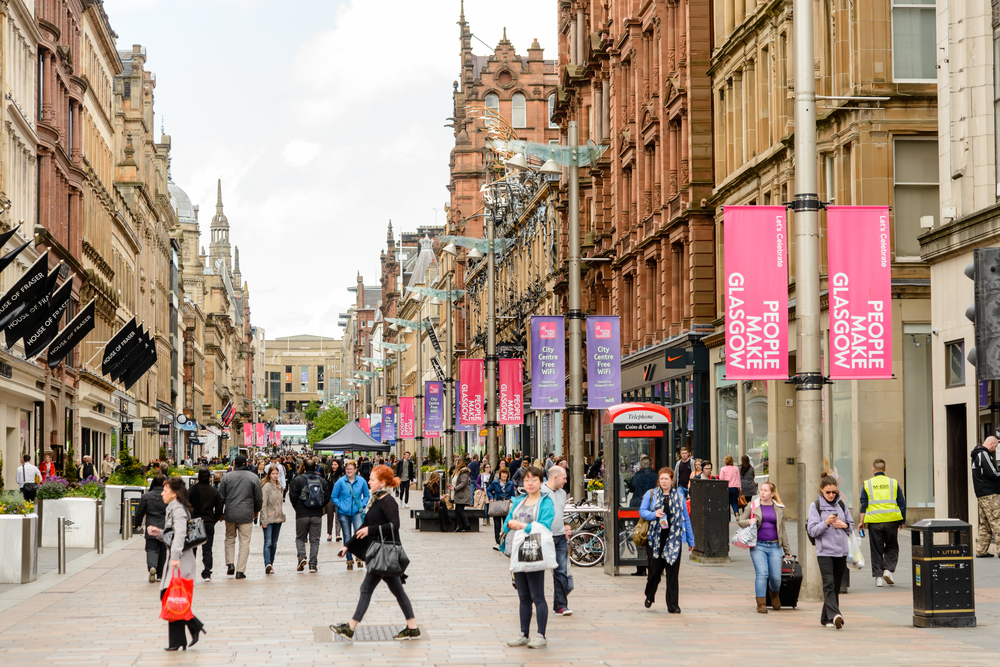On September 27th, a joint committee formed by NHS and city council officers approved a plan to implement Scotland’s first legal drug consumption room. The plan is to have the facility operational by April next year, with funding guaranteed by the Scottish government until 2027 for evaluation of the pilot programme. The Scottish government will make £2.3 million available a year to execute this project.
“We know from experience that networks of safer injecting facilities are what is needed and we would be more than happy to work with other cities. I’m already having questions from different cities around the country looking to learn from us about opening one,” Allan Casey, Glasgow City Council’s addictions convener, told The Guardian.
Members of the Scottish Parliament have also recently manifested their confidence in the pilot programme and their desire to see it implemented in other parts of the country. “The principles upon which our national mission sit are that problematic drug use is rooted in poverty and trauma and is a health condition. That is why we are committed to reducing the number of people who are dying of overdose and to improving their lives” said Elena Witham, the Scottish Minister for Drugs and Alcohol Policy.
Scotland holds the macabre title of drug death capital in Europe and would be a runner-up on the global scale, with only the United States having a higher rate of deaths per 100,000 people. Close to 80% of all drug-related deaths in Scotland are related to the use of opiates. Since the Scottish government started to consistently collect and publish data on deaths by overdose in 1997, the number of people who died has grown exponentially. In 1997, there were 263 deaths. In 2020 this tragedy reached its peak, with 1,339 people lost. The latest numbers for 2022 presented a minor reduction, totalling 1,051 lives lost; however, each one of these lives represent a friend, family member, or loved one, a tragedy to those around them.

Glasgow’s effort to open a drug consumption room is the culmination of a long-awaited and much-needed step toward combating this drug crisis. However, it has not been met with sympathy of the British Home Secretary Suella Braverman, who vehemently labelled it as a “wrong policy”, believing it fails to address the root causes of addiction and dependency. It is worth noting that Braverman’s stance is not consensual among her Conservative Party colleagues. James Evans, a member of the Welsh Parliament extended a warm welcome to the Scottish initiative and urged Wales to follow Scotland’s lead.
Despite Westminster’s control over drug policy and legislation within the UK, and its current punitive approach towards people who use drugs, Glasgow represents a beacon of hope. This is carried by the Scottish Lord Advocate Dorothy Bain—the country’s senior Law Officer—who can alter prosecution policy. Weeks before the approval of the drug consumption room plan, Lord Advocate Bain articulated a perspective that resonates with compassion and pragmatism. In a requested statement on the policy of prosecution and how it would affect the pilot programme, she said that she “would be prepared to publish a prosecution policy that it would not be in the public interest to prosecute drug users for simple possession offences committed within a pilot safer drugs consumption facility.”
The hope within a new room
Glasgow’s safe consumption room is the culmination of years of advocacy and the willingness to take a bold approach to addressing the overdose deaths crisis; its success holds the potential for numerous positive outcomes. The first expected outcome is, of course, a reduction in overdose deaths. Access to a facility with medical professionals on hand is hoped to decrease drug-related health issues associated with risky use practices. The pilot programme is poised to generate invaluable data on the effectiveness of safer consumption rooms in the UK. This data will—or should— be instrumental in guiding researchers and policymakers as they contemplate the expansion of such facilities not only within Glasgow but to other parts of the country, which see similar levels of deprivation and problematic drug use. Furthermore, as the safer consumption room showcases its positive impact, there is the potential for a transformative shift in public opinion, accompanied by a reduction in the stigma historically attached to drug use. While the room’s existence is a public health initiative, it may also generate economic benefits, particularly through healthcare savings associated with reduced drug-related emergencies and illnesses, and other cost savings related to law enforcement efforts in addressing drug-related issues.
While the drug consumption room may prove to be life-changing for those accessing it, it also has the potential to reverberate across national and international drug policy discussions, adding to their growing body of global evidence. We can only hope that it would help bring about policy changes that prioritise harm reduction and public health considerations over punitive measures when dealing with drug-related issues.


